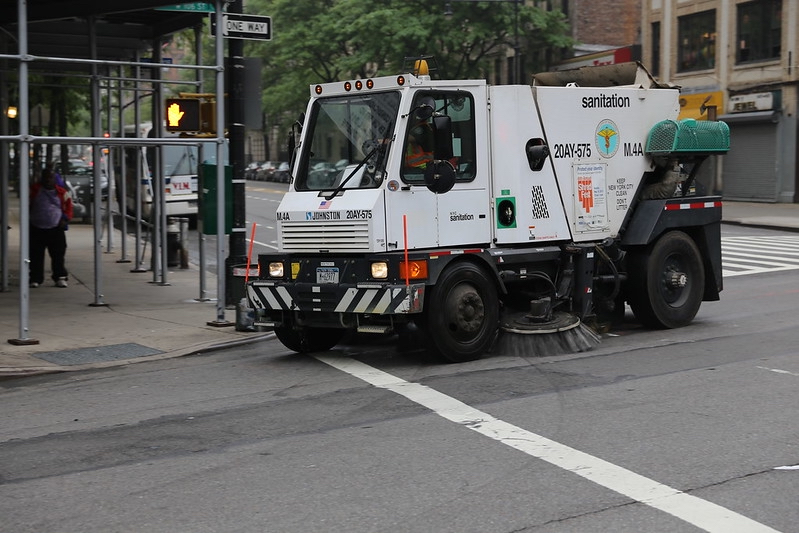Have a story idea
Have a story idea? Send it to us here.

Source : Flickr
October 16, 2022
Author : Alex Bustillos
With the aftermath of natural disasters, such as Hurricane Ian, many billions of dollars in damage to property and infrastructure have been caused.
The torrential rainfall and inundation also impact runoff, with communities facing mounting water pollution problems.
Street sweeping has long been acknowledged as an effective best management practice (BMP) for reducing the number of pollutants entering stormwater conveyance systems and receiving waters.
Nutrient pollution can lead to oxygen-depleted zones where aquatic life cannot exist. These zones often referred to as hypoxia, are generated by algae blooms that deplete oxygen as they die and degrade.
According to the EPA, over 166 dead zones have been identified in the United States, such as in the Chesapeake Bay and the Gulf of Mexico.
Total nitrogen (TN) and total phosphorus (TP) are two major contributors to hypoxia when allowed to enter streams. Much of the TN and TP that enters water bodies originate from impermeable surfaces, principally stormwater runoff from the pavement.
Budget constraints due to the pandemic have made it difficult to implement street sweeping in certain areas, as there is a dearth of information on the cost-effectiveness of removing TN, TP, and particulate matter (PM).
When resources are tight, many municipalities cut street sweeping services. Research reveals that street sweeping frequencies should be increased in communities committed to cleaning their urban waterways in the most cost-effective way possible, especially in areas that sweep less than monthly.
A study by the University of Florida, the Florida Stormwater Association, and a number of Municipal Separate Storm Sewer Systems in Florida found that there is statistical confirmation that a successful street sweeping program is the most cost-effective first line of defense against stormwater pollution. In a 12-year study from 2007 to 2019, street sweeping was the most cost-effective BMP for removing TP, TN, and PM.
Street sweeping is 5.4 times less expensive for TN removal than catch basin cleaning, 5.6 times less expensive for TP removal, and 6.4 times less expensive for PM removal.
The study indicated that removing a pound of phosphorus via street sweeping cost $257, compared to $1,656/lb via catch basin cleaning, $7,450 for a baffled hydrodynamic separator, $9,210 for a screened hydrodynamic separator, and $32,600 for wet basin sedimentation followed by granular media filtration. Street sweeping is 127 times more cost-effective than alternative end-of-pipe treatments.
A 2021 presentation by the Minnesota Cities Stormwater Coalition (MCSC) and the National Municipal Stormwater Alliance (NMSA) established the cost-effectiveness of street sweeping to remove phosphorus: In Minnesota, sweeping eliminates P for < $100/lb at certain periods of the year.
Mandatory car removal during sweeping can boost PM and other pollution pickups by 30-60% (depending on parking density) without a major increase in program expense. Mobile technologies can solve these challenges in a resident-friendly way. Emerging technologies may allow residents to see where street sweepers are in real-time, where they're heading, and their ETA.
With game-changing technologies, urban areas across America can make significant progress in implementing better street sweeping programs. According to America's stormwater professionals, street sweeping should always be the initial part of a treatment plan.
Category : Contractor Trades Public Works
